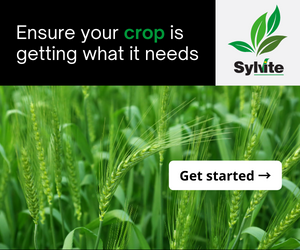Big booming Brazil
BRAZIL’S SIZE AND RATE OF GROWTH MAKE IT A GLOBAL LEADER
north american farmers, no strangers to large-scale farming, can come back from Brazil in a state of shock. “Big,” they report. “You can’t believe how big those farms are.”
The numbers support that observation. The business strategy for Brazil’s big agricultural companies is to create multiple farms of 25,000 acres or more that feature state-of-the-art technology and an extensive support staff.
One analyst recently hailed these farms as the world’s “New Soy Kings,” and in December, the US Department of Agriculture projected 2011/12 as the year Brazil’s soybean exports will surpass US exports.
There has even been a flurry of suggestions in recent years that Brazil holds the key to feeding a growing world population.
Forty years ago, this was unimaginable. Back then, much of Brazil’s land was considered unfit for agriculture, and the nation was a large net food importer.
variety abounds
Today, Brazil is the third largest agricultural exporter in the world and the first tropical agricultural giant, shipping out beef, pork, poultry, oilseeds, sugar, coffee, tobacco, cotton, corn, and frozen concentrated orange juice.
“In São Paulo and Paraná states, they can grow any crop I can image,” says Ray Gaesser, a farmer-director for the American Soybean Association. “Wheat, soybeans, corn, pineapples, bananas, trees.
“Along the ocean, farms on average are pretty small, but in the cerrados (Brazil’s high plains), they can be 100,000 hectares. I’ve been to the Maggi farm. It went on for 20 kilometers from horizon to horizon and all we could see were soybeans – not even a telephone pole. They farm it in 200-hectare blocks with dirt roads in between.”
overcoming challenges
Gaesser, who visits Brazil regularly to see exchange students he has hosted, explains that Brazilian farmers still face significant challenges, not just with infrastructure but with soils, diseases and weather.
“Farmers have to be careful of the clay content. When they start, there is just zero nutrients in the soil. One family I know has been farming 20 years, and they are finally at the point where they can consider cutting back on fertilizer,” he says.
“There’s lots of insects there,” Gaesser reports. “But Bt technology is becoming available for soybeans, and they’ve learned how to manage Asian soybean rust with monitoring, the timing of [fungicide] applications, and getting more rust-resistant varieties.”
He also sees some improvements in Brazil’s historically poor infrastructure. “In Mato Grosso, it used to be 1,500 miles to an Amazon export terminal. Now it’s 700 miles.”
great growth
Like many farmer observers, Gaesser comes back to the size of Brazil’s farm sector and to a second theme – how fast Brazil is developing.
He cites cities like Sapezal in western Mato Grosso: “In 1982 there was no one, and by 2004, it was 20,000 people.”
Mark Mueller, an Iowa farmer, also talks as much about the speed of Brazil’s growth as its scale.
“We visited a big poultry plant right next to a feed mill. It’s been designed so they can double capacity when they need it. There are 50,000 people in a community that wasn’t on my map ten years ago,” he reports.
“We saw a JBS meat packing plant that was only nine months old, all new design for the animals to flow easier with less stress. It could handle 3,000 head per day. We saw a hog plant that handles a million head per year.
“There’s all these new meat packing places going up without a neighbor to complain,” Mueller says. “Livestock production is growing because crop farmers are asking ‘should we haul $10,000 worth of beans or $100,000 worth of boxed beef?’ So they are looking at turning their bulk commodities into higher value products they can ship out.”
future potential
How much more can Brazil expand production?
The 2011 FAPRI Agricultural Report projects Brazilian corn output increasing 26 percent over the next decade, almost all of it going into in-country livestock production. Corn exports, as a result, will hold steady.
Brazil’s soybean production, on the other hand, is up 19 percent in the FAPRI projection and exports climb by an estimated 44 percent. Beef, pork and broiler production are expected to increase by 60, 17 and 20 percent respectively.
Those estimates assume that Brazil’s combined corn and soybean plantings increase by 3.4 million hectares. However, only 60 million hectares of the cerrados – about one-fourth of it – is in use.
EMBRAPA, Brazil’s agricultural research organization, estimates another 100 million hectares are suited for modern crop production. The US Department of Agriculture sets the figure even higher, at 145 to 170 million hectares that could be used for crop production.
As one business website predicts, “The boom is destined to continue long into the future.” •








